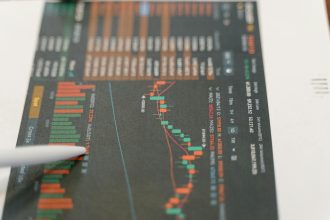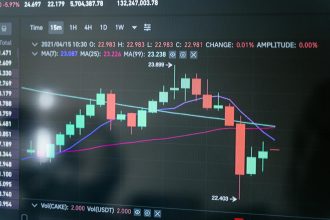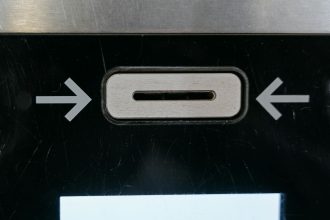# FX Swaps: Master Your Cash Flow With Strategic Currency Exchange
In today’s interconnected global economy, managing cash flow effectively is paramount for businesses of all sizes. Fluctuations in currency exchange rates can create significant uncertainty, impacting profitability and strategic planning. Fortunately, innovative financial instruments exist to help navigate these choppy waters. One such powerful tool, often overlooked by many, is the **FX swap**. By strategically exchanging currencies now and agreeing to reverse the transaction later, FX swaps offer a sophisticated yet accessible method to align the timing of currency inflows and outflows, thereby bringing much-needed control to your business’s financial rhythm.
## Understanding the Mechanics of FX Swaps
At its core, an FX swap is a two-part transaction. It involves the simultaneous buying and selling of two different currencies, with the agreement that these transactions will be reversed at a predetermined future date and at a predetermined exchange rate. Think of it as a short-term loan where you borrow one currency and lend another, with the interest rate implicitly built into the forward exchange rate.
### The Two Legs of the Swap
* **The Near Leg (Spot Transaction):** This is the initial part of the swap where you exchange one currency for another at the current spot rate. For example, a U.S. company needing Euros for immediate operational expenses might sell USD and buy EUR at today’s market rate.
* **The Far Leg (Forward Transaction):** This is the reversal of the initial transaction. On an agreed-upon future date, the exchange is reversed at a predetermined forward rate. In our example, the U.S. company would sell EUR back to USD on the future date at the rate agreed upon when the swap was initiated.
### Why FX Swaps Are More Than Just Currency Exchange
While the basic definition involves currency exchange, the true power of an FX swap lies in its ability to manage timing mismatches. Imagine your business has a significant inflow of USD expected in three months, but a large payment in EUR due in one month. Without an FX swap, you’d face considerable exchange rate risk. You’d have to either convert your USD early, potentially at an unfavorable rate, or secure a separate loan in EUR. An FX swap allows you to effectively “borrow” EUR now using your future USD as collateral, and then repay the “loan” when your USD inflow materializes.
## The Strategic Advantages of Employing FX Swaps
The benefits of incorporating FX swaps into your financial strategy are manifold, directly addressing common pain points in international business operations.
### 1. Precise Cash Flow Management
This is the primary driver for utilizing FX swaps. They are invaluable for businesses that experience:
* **Timing Mismatches:** As highlighted, when inflows and outflows in different currencies don’t align, FX swaps bridge the gap.
* **Predictable Inflows/Outflows:** If you know you’ll receive a certain amount of foreign currency in the future but need local currency now, or vice-versa, a swap provides certainty.
* **Working Capital Optimization:** By eliminating the need for immediate currency conversion or short-term borrowing at potentially high interest rates, FX swaps free up working capital.
### 2. Hedging Against Currency Volatility
Exchange rates are notoriously unpredictable. A sudden appreciation of a foreign currency could significantly increase the cost of your liabilities, while a depreciation could reduce the value of your receivables. FX swaps lock in the exchange rate for the future leg of the transaction, effectively hedging your business against adverse currency movements. This predictability is crucial for accurate budgeting and financial forecasting.
### 3. Cost-Effectiveness Compared to Other Instruments
While other hedging instruments like currency options or futures exist, FX swaps often present a more cost-effective solution for short-to-medium term needs. The “cost” of an FX swap is embedded in the difference between the spot and forward rates, which reflects prevailing interest rate differentials. For many scenarios, this is more efficient than paying upfront premiums for options or dealing with the margin requirements of futures.
### 4. Flexibility and Customization
FX swaps can be tailored to meet specific business needs. The tenor (duration) of the swap, the currencies involved, and the amounts can all be customized. This flexibility makes them a versatile tool for a wide range of international transactions, from paying suppliers to managing foreign subsidiary operations.
## When Should Your Business Consider an FX Swap?
Identifying the right moment to deploy an FX swap is key to maximizing its benefits. Here are common scenarios where they shine:
* **Funding Foreign Operations:** A company may need to fund its overseas subsidiary for a period. Instead of converting a large sum of home currency, they can swap it for the foreign currency needed, knowing they will swap back when repatriation of profits occurs.
* **Managing Large Upcoming Payments:** If a substantial payment in a foreign currency is due, but the corresponding revenue in that currency won’t be received until later, an FX swap can secure the necessary funds without exposing the business to immediate exchange rate risk.
* **Bridging the Gap for Capital Projects:** When undertaking international capital projects, phased payments might be required. FX swaps can help manage the currency needs for these phases until the project’s revenue streams begin.
* **Optimizing Foreign Currency Holdings:** Businesses with excess foreign currency might use an FX swap to convert it to their home currency for immediate use, with an agreement to buy back the foreign currency later if needed, potentially at a more favorable rate.
## How to Execute an FX Swap: A Step-by-Step Guide
While the concept is straightforward, the execution requires a reliable financial partner.
1. **Assess Your Needs:** Clearly define the currencies involved, the amounts, and the specific dates for the initial exchange and the reversal. Understand your exposure to currency fluctuations.
2. **Partner with a Financial Institution:** Engage with a reputable bank or financial institution that offers FX swap services. They will be able to provide quotes and guide you through the process.
3. **Obtain Quotes:** Request quotes for the spot and forward rates for your desired currency pair and tenor. Compare offers from different institutions if possible.
4. **Agree on Terms:** Once you’ve selected a provider and agreed on the rates, formally document the terms of the FX swap. This includes the spot rate, forward rate, value dates, and amounts.
5. **Execute the Near Leg:** The transaction begins with the spot exchange of currencies.
6. **Monitor and Await the Far Leg:** As the maturity date approaches, ensure you are prepared for the reversal of the transaction at the agreed-upon forward rate.
## Potential Considerations and Risks
While powerful, FX swaps are not without their considerations:
* **Counterparty Risk:** As with any financial derivative, there is a risk that the counterparty (the bank or financial institution) may default on their obligations. Choosing a financially sound and reputable institution mitigates this risk significantly.
* **Interest Rate Differentials:** The forward rate in an FX swap is influenced by the interest rate differentials between the two currencies. If these differentials move unfavorably, the cost of the swap might be higher than anticipated, though this is generally factored into the initial pricing.
* **Liquidity:** For very long tenors or exotic currency pairs, liquidity might be a concern, potentially leading to wider bid-ask spreads.
## The Future of Cash Flow Management with FX Swaps
In an increasingly globalized and volatile economic landscape, the ability to control and predict cash flow is a competitive advantage. FX swaps offer a pragmatic and efficient solution for businesses looking to mitigate currency risks and optimize their financial operations. By understanding their mechanics and strategically applying them, companies can move beyond simply reacting to market movements and instead proactively shape their financial future.
The power of FX swaps lies in their ability to synchronize your financial obligations with your expected revenues, regardless of currency borders. They are not just a tool for hedging; they are a fundamental component of robust treasury management, empowering businesses to operate with greater confidence and stability on the international stage.
copyright 2025 thebossmind.com
Source Links:
* [https://www.investopedia.com/terms/f/fxswap.asp](https://www.investopedia.com/terms/f/fxswap.asp)
* [https://www.bis.org/publ/rp0811.pdf](https://www.bis.org/publ/rp0811.pdf)
Featured image provided by Pexels — photo by Photo By: Kaboompics.com










